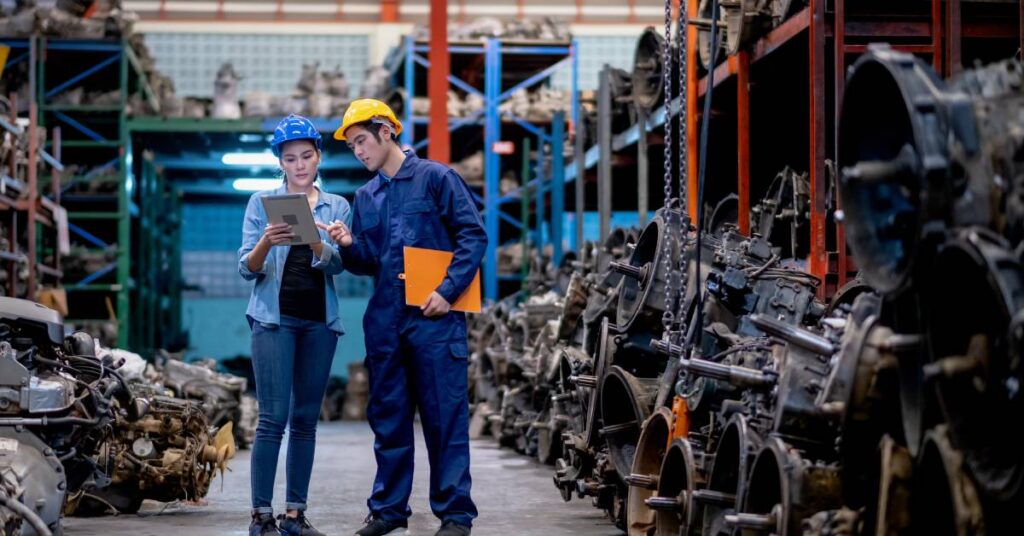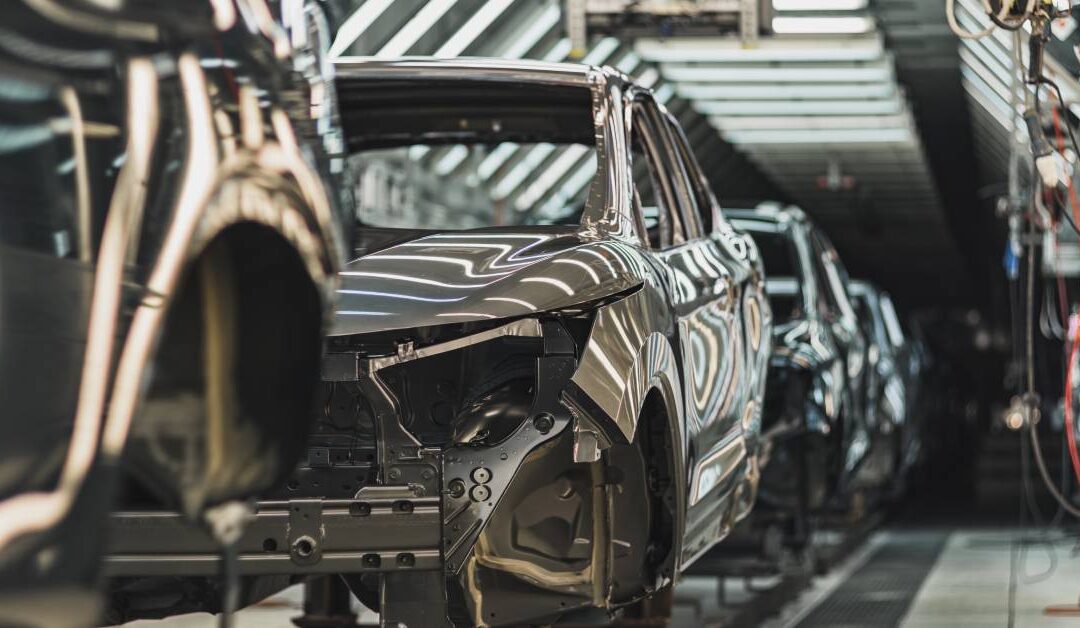Manufacturers face significant challenges in keeping production sustainable, from excessive material use to inefficiencies in energy and processes. Addressing these concerns means tackling waste with smarter strategies and innovative solutions. This post explores how automotive manufacturers can reduce waste while boosting efficiency and safeguarding resources.
Transitioning to Recycled Metals
Recycled metals, such as aluminum and steel, bring durability and sustainability together. Using recycled aluminum cuts down on mining activities and reduces energy consumption compared to extracting raw materials. Steel recycling programs further tackle waste while reducing greenhouse gas emissions from production.
Additionally, bioplastics sourced from natural materials, such as cornstarch and sugarcane, offer an alternative to petroleum-based plastics. These materials decompose faster than traditional plastics, limiting their environmental impact after use.
Recycled metals and bioplastics reduce dependency on fossil fuels and help companies manage manufacturing waste effectively. Furthermore, switching to eco-friendly materials does more than minimize waste; it supports operational efficiency over time.
Energy-Efficient Manufacturing Processes
Automotive manufacturers can reduce waste by integrating more lean manufacturing processes into their routines. The practices aim to eliminate inefficiencies and promote sustainability across production lines. Removing redundant steps in workflows reduces unnecessary energy use while improving production speed.
Streamlining processes allows manufacturers to balance resource conservation with high output rates. For example, streamlining material ordering and inventory management reduces waste from overproduced components.
Just-in-time production models align material use with precise project needs, preventing the accumulation of unused inventory. Manufacturers using targeted production schedules focus on generating only what they need, maintaining resource efficiency.
Advancing Renewable Energy Integration
Renewable energy sources, such as solar and wind power, reduce dependence on fossil fuels within manufacturing facilities. Installing renewable energy systems cuts factory emissions and lowers energy-related costs over time.
These technologies become more valuable as global energy demand shifts away from non-renewable sources. Manufacturers adopting renewable energy align themselves with sustainable production goals while supporting overall waste reduction.

Upgrading Manufacturing Technology
Older production equipment wastes energy and produces higher levels of scrap or byproducts. Upgrading to energy-efficient machinery improves material precision and reduces consumption.
Advanced tools, such as automated systems with built-in quality controls, minimize production errors and keep waste generation low. Investing in improved technology positions manufacturers to meet sustainability targets without losing performance.
Controlling Energy Use With Management Tools
Energy consumption spreads across multiple operations in manufacturing, and controlling this usage creates fewer unnecessary environmental impacts. Energy-monitoring software highlights inefficiencies and guides system optimization. Adjusting production schedules or fine-tuning machinery based on energy data helps conserve resources throughout operations.
Useful Waste Management Strategies
Separating materials prior to disposal ensures fewer recyclable resources end up in landfills. Organized collection systems at manufacturing sites allow each material type to enter specialized recycling programs more easily. Adding clear sorting procedures into production workflows maximizes the recovery of usable resources.
Moreover, circular economy practices focus on repurposing materials rather than discarding them. Engines, electronics, metal frames, and similar components can turn into reusable parts. Recycling-centered design systems support easily disassembled products, allowing manufacturers to recover components efficiently.
This method conserves materials while reducing the need for continual raw material imports, creating a more sustainable lifecycle for automotive products. Additionally, collaborating with specialized recycling services expands a facility’s ability to handle complex material streams. These partnerships allow factories to process unusual or multi-layered resources, such as composites.
Fostering resource recovery partnerships enhances versatility while intensifying waste management quality. These arrangements help manufacturers recover difficult-to-recycle materials rather than resorting to disposal.
Using Data To Drive Continuous Improvement
Tracking waste outputs and processes offers insights that improve waste management strategies over time. Digital tools collect information about high-volume or costly inefficiencies, delivering actionable feedback for reducing waste streams.
Reviewing performance data supports more strategic decision-making regarding recycling, disposal, and overall production. Effective use of metrics gives manufacturers new perspectives for refining material use and disposal practices continuously.
Solvent Recycling in Automotive Manufacturing
Solvents support automotive manufacturing, particularly in cleaning machinery and applying finishes such as paints and coatings. However, improper handling of used solvents creates harmful waste and increases disposal costs.
Solvent waste releases volatile organic compounds (VOCs), contributing to air pollution. Fortunately, recycling solvents through advanced methods, such as distillation and filtration, reduces waste while recovering valuable materials.
The solvent recycling machine separates usable solvents from contaminants, creating a clean product that manufacturers can reintroduce into their operations. The process limits the need for new solvent purchases, cutting overall costs. Such systems also minimize waste streams.
Automation in solvent recycling systems has further streamlined recovery efforts, ensuring that even high-use facilities can benefit from reduced environmental impact without slowing production.
Key Benefits of Solvent Recovery in Automotive Plants
Solvent recovery systems transform automotive manufacturing by driving sustainability and efficiency. Here’s how they create a lasting impact:
- Recycling solvents slashes waste and lowers the environmental impact of automotive plants. This practice ensures sustainability improves within a facility and across the entire supply chain.
- Solvent recovery systems adapt to your needs, whether you’re running a small workshop or a massive production plant. Their scalability makes them an ideal solution for operations of any size.
- Using solvent recovery systems reshapes how facilities handle waste. Over time, they help build a manufacturing culture that prioritizes thoughtful and responsible production methods.
- Solvent recycling delivers long-term benefits by reducing environmental harm and cutting costs. Facilities save significant money by reducing waste disposal expenses.
The Role of Emerging Technology in Reducing Waste
Artificial intelligence (AI) systems pinpoint wear and tear on machinery before failures occur. Predictive maintenance tools powered by AI collect data on machine performance, forecast potential issues, and schedule repairs.
Unexpected breakdowns result in halting production and wasting valuable materials. Predictive AI reduces these risks, keeping operations reliable and efficient while avoiding waste tied to mechanical errors.
Furthermore, integrating robotics into assembly lines enhances material efficiency. Robots equipped with sensors and precise controls handle materials with minimal errors, reducing the likelihood of misused or rejected parts.
Automating assembly lines through robotics alleviates the margin for human error, meaning fewer resources go to waste. Advanced robotics also work seamlessly with various materials, optimizing processes for durability and sustainability.
New advancements continue to offer untapped opportunities for waste reduction. Fully automated factories equipped with closed-loop recycling systems and other innovations could redefine the manufacturing industry.

Practical Takeaways and Final Thoughts
Proactive measures in automotive waste reduction provide pathways for a more sustainable future. Small changes carry meaningful impacts, from implementing better waste separation to integrating cutting-edge technology into manufacturing practices. Organizations aiming for long-term success should prioritize improvements that limit waste while boosting efficiency.

